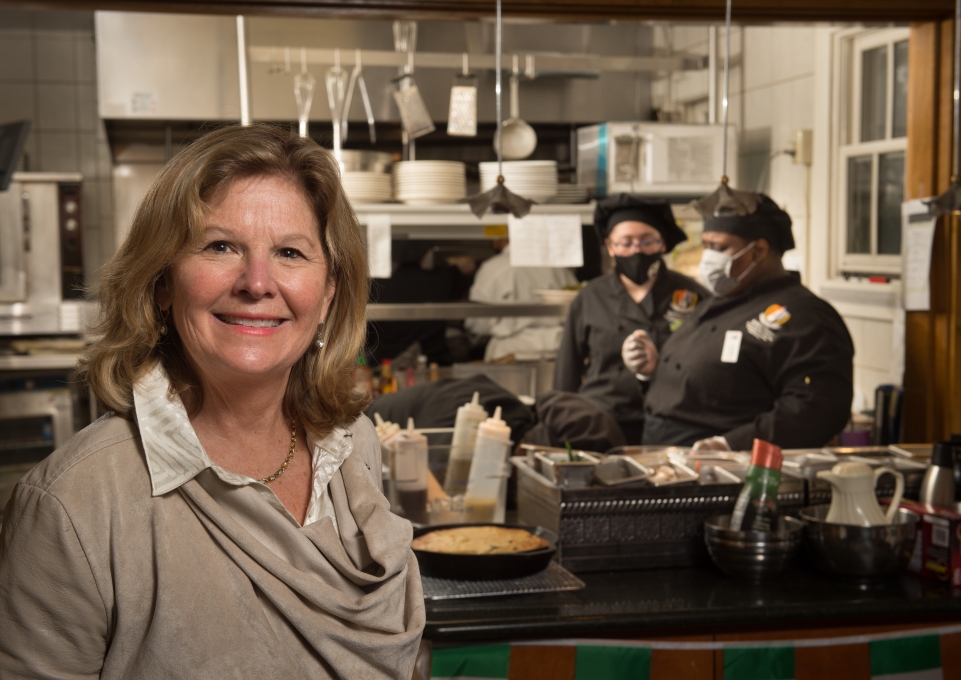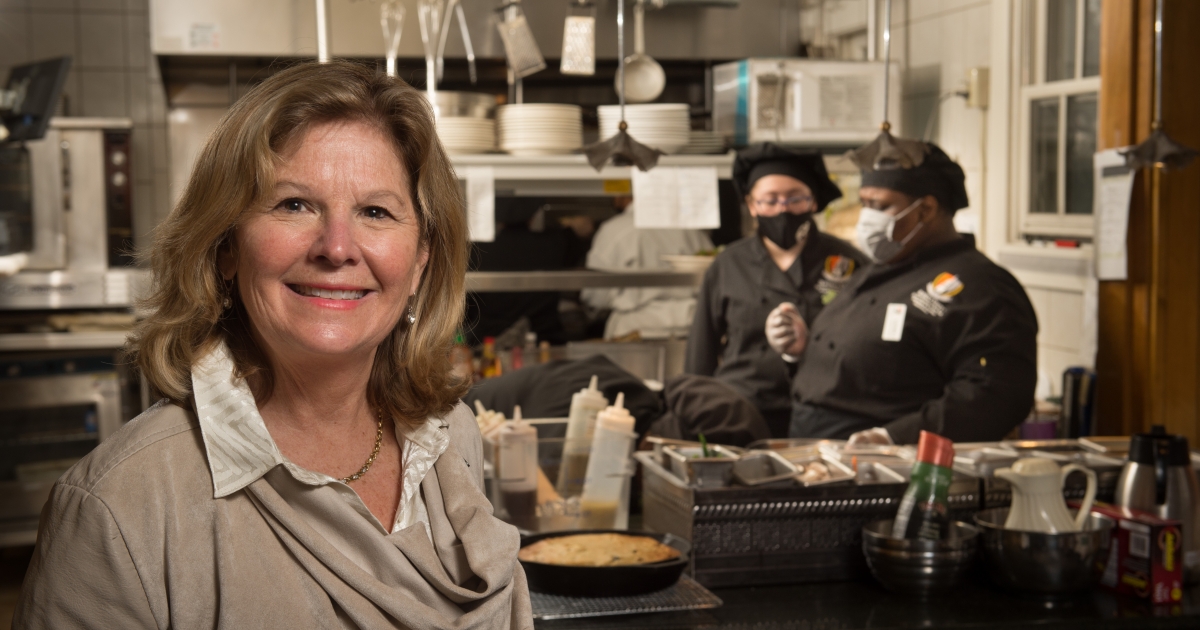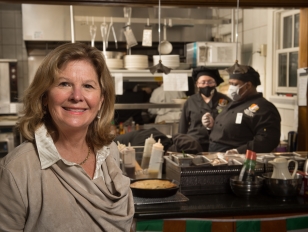
When the coronavirus forced much of the country into lockdown last March, millions of people lost jobs, and some, longtime livelihoods. One sector of the economy that felt this loss immediately and profoundly was the restaurant industry.
According to a recent report from the National Restaurant Association, more than 110,000 eating and drinking establishments closed in 2020, either temporarily or for good, and 2.5 million restaurant industry jobs disappeared. In Erie County, restaurants experienced two state-mandated shutdowns while also investing in safety modifications and supplies last year. Capacity cuts and curfews ensued.
At the same time, the pandemic spurred restaurant owners and operators to get creative—offering curbside pickup, delivery, expanded outdoor dining in parking lots, and even patio heaters—in order to stay afloat.
Kathleen O’Brien, lecturer and chair of Buffalo State College’s Hospitality and Tourism Department, shared her thoughts on where the restaurant industry stands and what the future may hold as we emerge from the pandemic over the coming weeks with more available vaccines.

Name: Kathleen O’Brien
Title: Buffalo State College Lecturer and Chair of the Hospitality and Tourism Department
O’Brien is the founding director of Campus House, the department’s teaching and research laboratory that opened as an on-campus dining club for faculty, staff, and alumni in 2002. O’Brien specializes in hospitality services management, event planning, and private club management and teaches cultural tourism and management strategies for the global hospitality industry.
What’s the status of the restaurant industry now, especially in Western New York?
Nothing has been more devastating for the industry than what we’ve been through this past year.
Sue McCartney, director of the campus’s Small Business Development Center, and I gave a free virtual workshop for restaurant owners in June to help them through this. We heard from owners about their need for education and training on new and stricter mandates for sanitation and safety, technology, and shifting business and financial planning. Some were worried about stabilizing their situations when allowed to reopen.
However, the immediate future may not be bad for local restaurants. Once people have had their vaccines and want to go out again, they may stay fairly close to home—they can’t go to Canada yet and may not feel comfortable with other travel. They will go out to eat, especially if they have developed a loyalty to certain restaurants. This loyalty is a common phenomenon in Buffalo.
Restaurant owners, by and large, are creative individuals, and they’ve had to really be creative during the pandemic. Some were more successful than others. At Coco Bar and Bistro in downtown Buffalo, the owner suspended indoor dining and shifted to pickup and delivery services, as many restaurants did. But she also built a Swiss-style chalet outside with heaters, where they served crepes. It worked. And The Place, a legacy restaurant on Lexington Avenue, has used a parking lot with a firepit to serve additional people safely, along with increasing takeout options.
A couple of new restaurants are opening right now while others are shutting their doors. It’s the cycle of restaurant life.
What are some indicators that a restaurant will make it?
Committed ownership, a strong partnership, and a fighting spirit are all required for a successful business, now more than ever. For independent restaurant owners, it can be part of their legacy. It’s not easy to throw the keys to someone outside of family. If someone is at the end of his career and has no one to carry on the business, he might quit during tough times like these. On the other hand, if someone is mid-career and has a strong partnership, it can work. While a bad partnership can dissolve a business, a good one can make the business stronger.
Previous financial conditions, of course, figure into a restaurant’s success. If the restaurant was overextended to begin with, it may not make it now.
And, finally, timing. If a restaurant opened right before COVID hit, the owners have had to work that much harder. Long-standing restaurants with a loyal following are in a better position to withstand the downturn.
What changes will restaurants and other hospitality venues need to make going forward?
Already, restaurants had been following safety protocols and stringent sanitization standards that exceed what health departments require. Those efforts only accelerated during COVID. Increased sanitation habits are here to stay. Concern for the safety of employees and customers has to be first.
If they haven’t already, those working in the hospitality industry have to adopt a new approach to their customers. They have to have empathy for the suffering everyone has gone through. Customers are hungry for human interaction, which in many cases, restaurants haven’t been able to provide. At the same time, expectations may have changed. Will restaurants continue the takeout and delivery service they added during COVID, for instance? They all need to study the market and see what customers want.
Hotels will have to continue to evolve with their contactless approach to service. It will get us into the future a little faster than planned with more automation. We’re just skipping a couple of steps we didn’t anticipate.
How did the pandemic change the way Buffalo State taught hospitality classes?
We added an extra week of training to two practicum classes for our students in Campus House: Food and Beverage Management and Hospitality Operations Management. We added a COVID component with a heavy emphasis on sanitization and guest safety. At the end, students received a certificate for their achievement.
Also, COVID has forced our students to bring more self-awareness to the job. They’ve had to be mindful of body language and how close they’re standing to the guests. Space is everything.
It’s important and beneficial that students have had this relevant experience and gone through this difficult time with everyone else in the industry. It’s definitely been a teachable year.



